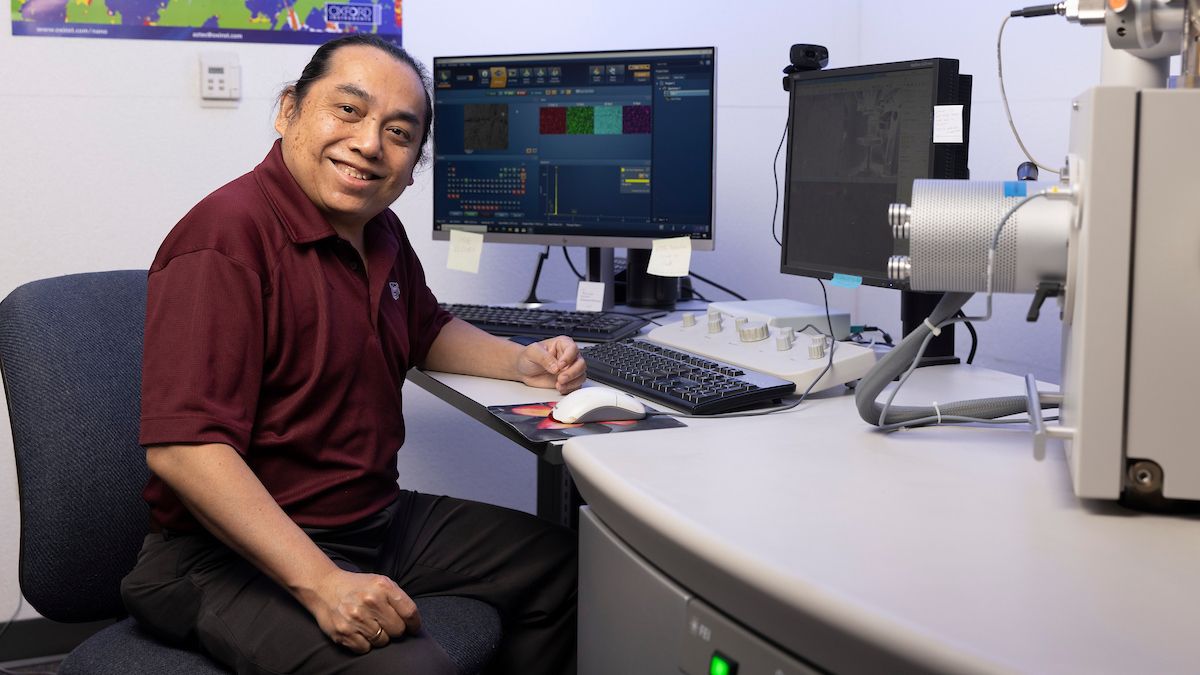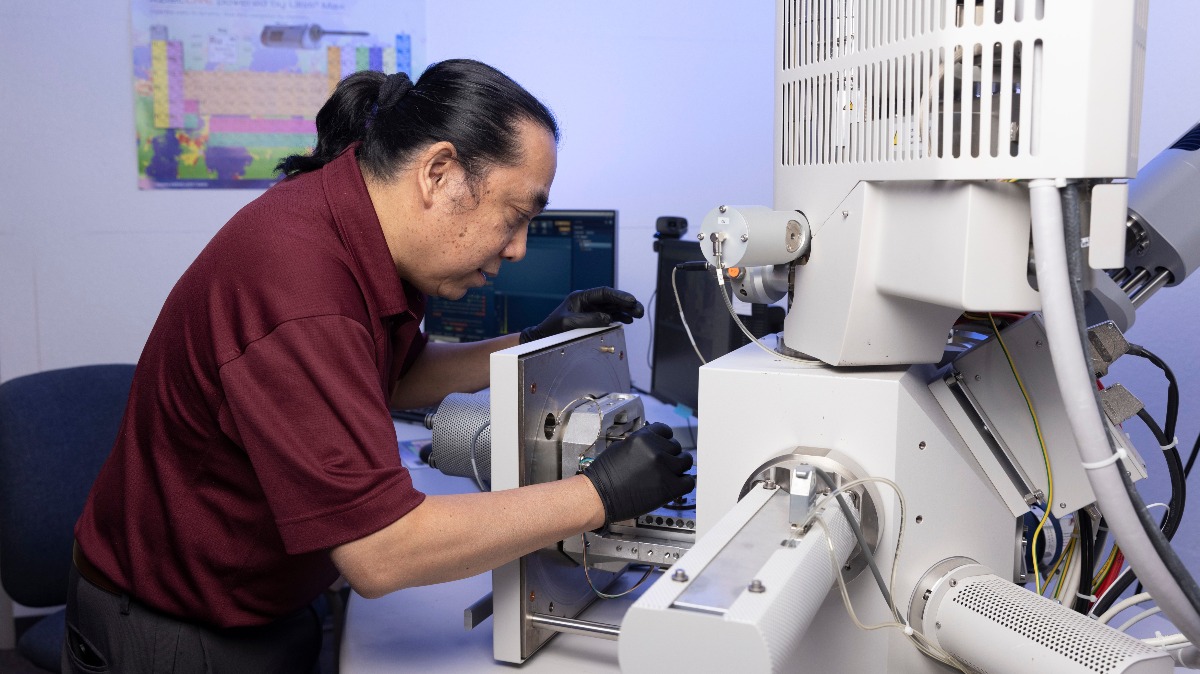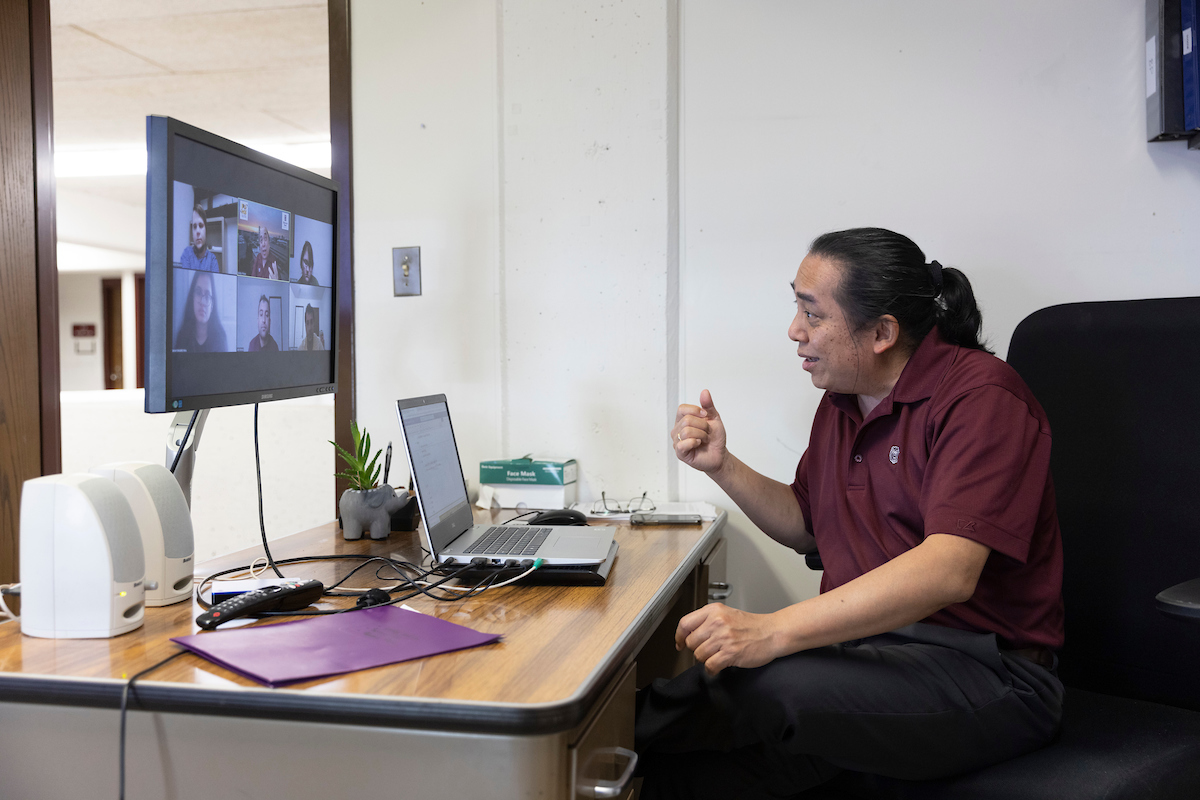Archive for May, 2021

Celebrating collaborative research
Sakidja is a professor in the department of physics, astronomy and materials science at Missouri State University, the nation’s only such combined department.
Computational materials science uses modeling, simulation, theory and informatics to better understand materials.
Sakidja’s research is varied, but his ultimate goal is the same.
“Our overall research goal has been to help accelerate the discovery process of and to design new materials. We employ computational materials science to achieve this goal,” said Sakidja, an Indonesian native.
He is involved in multiple grant-funded collaborative research projects with level–one research universities (R1), the highest Carnegie classification. The projects have received nearly $2.9 million total in grant funding from the Department of Energy (DOE) and National Science Foundation (NSF). More than $1 million was granted to Missouri State.

Dr. Ridwan Sakidja prepares his equipment for an experiment.
Interesting research
One example of Sakidja’s research is a multi-scale modeling project. In it, he and his collaborators are predicting the performance of a nickel-based superalloy for turbine engines.
The goal is to develop new materials for turbine engines to operate at higher temperatures but with less energy and at a reduced cost.
The project is supported by the DOE and is a collaboration with UMKC, Missouri University of Science and Technology, and University of South Carolina.
“We work together to design and predict the mechanical properties of the next generation of superalloys,” he said.
This collaboration is possible because of supercomputer clusters. Sakidja and his graduate assistants perform critical virtual experiments on the supercomputer clusters.
The alloy system is very complex, made of 10 elements and contains multiple phases. The modeling is key because it’s incredibly expensive to conduct experiments to develop new alloys, he explained.
Mechanical failures typically originate from the breakdown at the atomistic or molecular level. So, understanding the dynamics of the mechanical properties at this level is critical.
“Our main contribution to this project is to develop the modeling platforms that can be used for materials development by leveraging our computational research experience,” Sakidja said.
Their collaborative work has been peer reviewed and published in SpringerLink, IOPScience and Nature Partner Journals.
The first two graduate assistants who worked on the project have already moved on to PhD programs at the University of Pittsburgh and North Carolina State University.
“Dr. Sakidja was a wonderful mentor who helped us find a problem, critically analyze a problem and solve it. This research was beneficial because it gave us real life experience that we would encounter in jobs after graduation. The research greatly helped me in PhD admission,” said Rabbani Muztob, who is pursuing a PhD at University of Pittsburgh.

Preparing graduate students is a priority for Dr. Ridwan Sakidja.
Collaboration is key
For another project funded by the NSF, Sakidja works with UMKC and Ohio State to develop a material used in body armor. The goal is to produce body armor at a lower temperature and reduce the cost of manufacturing.
“Good research draws the attention of the world toward the university, helps promote the professional excellence of the faculty, accelerates the development of the university and attracts outstanding students. The research I conducted during my master’s at MSU helped me to get into the PhD at another top-rated university,” said Sabila Kader Pinky, PhD student at North Carolina State University.
Typically, these materials are manufactured at 1,500 degrees Celsius, consuming an incredible amount of energy.
“The low-temperature process that we helped model offers an alternative route that dramatically reduces the necessary temperature to less than 300 degrees Celsius, a significant saving in energy and thus operating cost. Within this project, we also advanced the use of machine learning to help optimize the low-temperature synthesis process. This was why our project has been funded as a part of a special grant from NSF called Designing Materials to Revolutionize and Engineer our Future,” he said.
Their collaborator at Ohio State characterizes the materials via a state-of-the-art scanning transmission electron microcopy. Then teams at UMKC lead the effort to fabricate the new materials and overall design.
Sakidja is also working on a project with the University of Kansas funded by the NSF to develop advanced electronics device called tunnel junctions.
“Our part is helping design the device by modeling the synthesis process at atomistic scale,” he said.
The project supports both undergraduate and graduate students as research assistants and graduate assistants.
One of Sakidja’s students, Devon Romane, contributed to a recent publication in The ACS Applied Materials Science and Engineering Journals. Romane finished his bachelor’s in physics in 2019 and is enrolled in the materials science graduate program as a graduate assistant.
Romane modeled the layer-by-layer deposition/synthesis process at the atomic scale the critical segment of this device, namely the ultra-thin tunnel barrier. Thickness is only about a few nano meters. Think of nanometer scale in terms of the diameter of a typical human hair being split into 100,000 pieces.
Without collaboration, much of this research would be impossible because the equipment costs would be prohibitive, said Sakidja.
He also hopes it will help recruit top talent to MSU’s graduate program.
“Computational material science is one of the best return of investments,” Sakidja said. “My hope is students can see this is the best place for them if they are into computational materials science. To be able to hone your skill, to excel and to participate in research at a university that is not as cost-prohibitive as others.”
- Story by Juliana Goodwin
- Photos by Jesse Scheve

